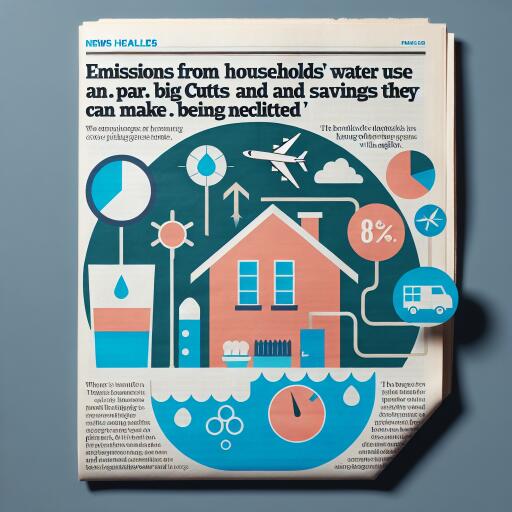
Transforming Household Water Use: The Overlooked Path to Significant Greenhouse Gas Emission Reductions
In the ongoing dialogue about climate change, a critical gap exists between recognizing the urgency for action and implementing strategies to curb greenhouse gas emissions effectively. Among these strategies, Scope 3 emissions, attributable to indirect activities of organizations, present a unique challenge and opportunity, particularly within the urban water sector.
When examining the energy involved in heating water for household use, it becomes evident that the cost, both financial and ecological, is higher than commonly acknowledged. This matter ties not only to the cost of living but also to significant considerations regarding water supply and energy infrastructure.
In Australia, for example, water utilities in the state of Victoria are responsible for a significant portion of Scope 1 and 2 emissions within the government sector, with these emissions stemming from direct activities and purchased energy. However, it’s the Scope 3 emissions related to water usage by consumers that offer a striking revelation: potential reductions in these emissions could far outstrip the savings from focusing on Scope 1 and 2 alone.
An analysis of residential water heating in relation to Melbourne’s greenhouse gas footprint reveals a surprising parallel. The emissions attributable to domestic water heating are nearly on the same level as those from aviation, representing 3.8% of an individual’s emissions footprint in Australia. A proposition emerges from this data: retrofitting showerheads across Melbourne with advanced technology could not only conserve water but also significantly slash energy usage, with the potential impact equivalent to removing thousands of cars from the roads.
This intervention, surprisingly, would demand less investment than broader renewable energy initiatives currently pursued by water utilities, while simultaneously offering savings to consumers. It illustrates a broader point: by encouraging more efficient water use, water utilities can influence customer behavior, leading to reduced water and subsequently, energy consumption.
The conversation around water use efficiency extends beyond the utilities. Manufacturing processes for everyday household appliances, which include dishwashers, washing machines, and even pool filtration systems, all contribute to a household’s water-related energy footprint. Despite the significant savings on not only water but also energy bills, the connection between efficient water use and reduced greenhouse emissions remains under-communicated.
This communication gap can be attributed to various factors. Showerhead manufacturers, for instance, cater to demand rather than advocating for efficiency. Water utilities, meanwhile, face budgetary constraints that make immediate investments in water-saving technologies appear less advantageous, despite the future benefits. For policymakers, the issue is even more abstract, as the focus tends to rest on consumptive needs rather than conservation.
This situation presents a classic “tragedy of the commons” dilemma, wherein individuals’ consumption habits, driven by disparate motivations, cumulatively exert a significant toll on our shared environmental resource. Here, the shared resource is the planet’s capacity to absorb emissions without leading to catastrophic climate outcomes.
Addressing this issue mandates a collaborative approach across community, industry, and government levels. It requires reimagining investment priorities, from a focus on minimizing costs to individual entities to adopting solutions that offer the “least cost to the community.” This shift in perspective is essential for directing attention towards Scope 3 emissions, where both challenge and potential lie.
As water utilities and other sectors aim for carbon neutrality in Scope 1 and 2 emissions, the battle against Scope 3 emissions looms large. Tackling these requires innovative thinking and cooperation across all stakeholders. By prioritizing actions that have a broader communal benefit, significantly reducing greenhouse gas emissions becomes a tangible goal. In turn, these measures pave the way for more sustainable water and energy consumption patterns, illustrating that with concerted effort, substantial environmental and economic savings are within reach.





Leave a Reply